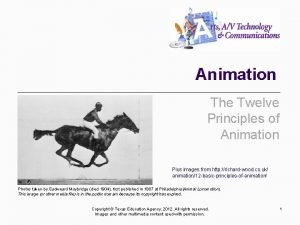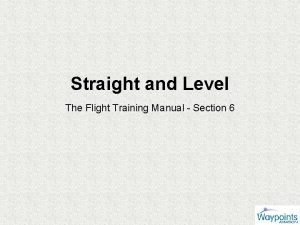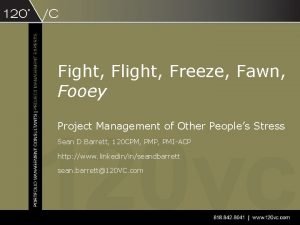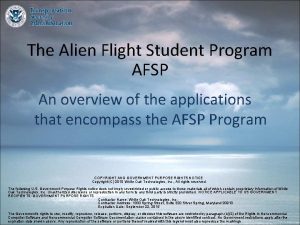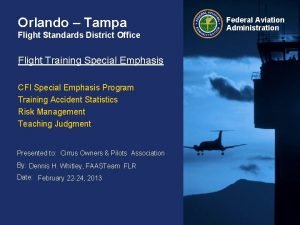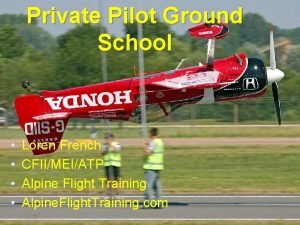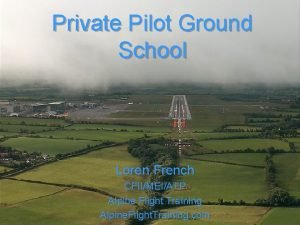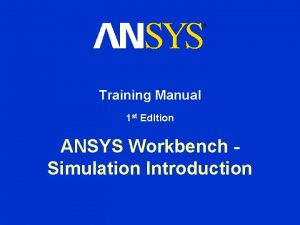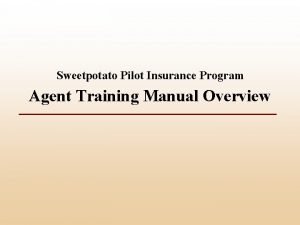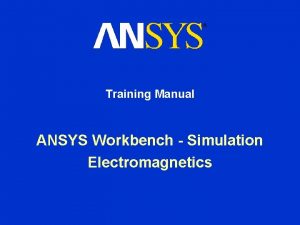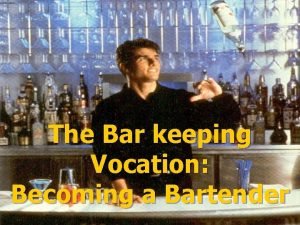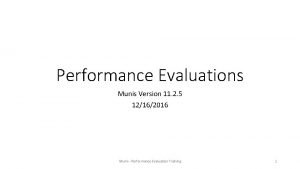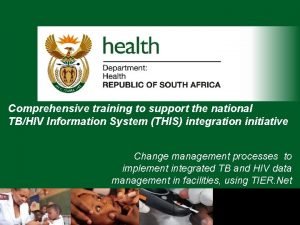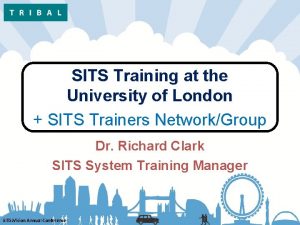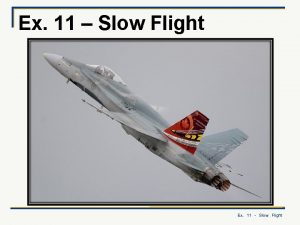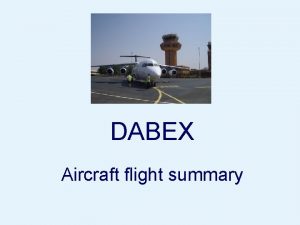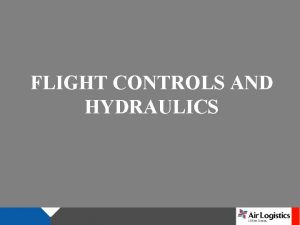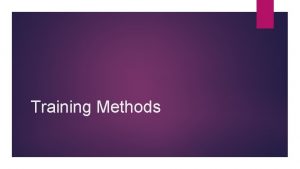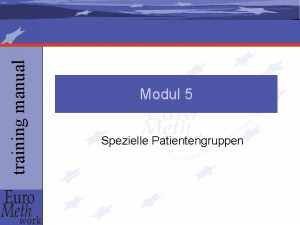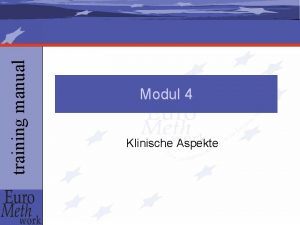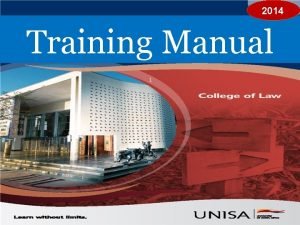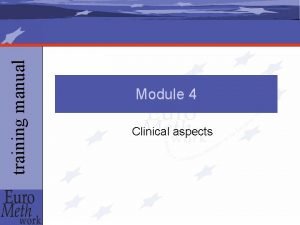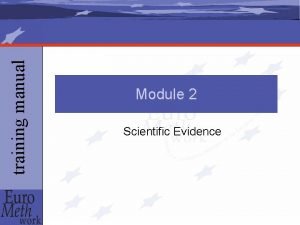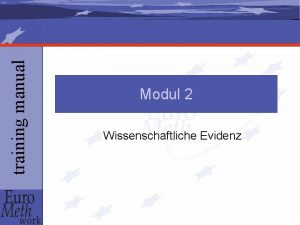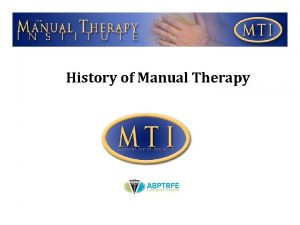Slow Flight The Flight Training Manual Chapter 11

















- Slides: 17

Slow Flight The Flight Training Manual - Chapter 11

Objectives • To slow the aeroplane and maintain straight and level at low airspeed (1. 2 VS). • To maintain straight and level at low airspeed. • To maintain a constant altitude while turning at low airspeed. • To return to normal operating airspeeds.

Principles Of Flight • Performance • Control Effectiveness • Turns

Principles Of Flight – Performance Weight is constant therefore to maintain Straight and Level, Lift must be: Constant Power + Attitude = Performance L Ao. A x IAS Ao. A IAS Power Normal Cruise 4 90 kt 2200 RPM Slow Flight (1. 2 VS) 12 46 kt (C 152) 2000 RPM 65 kt (PA 38)

Principles Of Flight – Performance Fly the aeroplane at a slow speed, but above the stall (next lesson).

Principles Of Flight – Performance • As airspeed decreases angle of attack must increase to maintain level flight • High nose attitude • A little extra power required, to overcome the increased Drag.

POF – Control Effectiveness Effects of Controls • All controls are affected by airspeed • With decreased airspeed, controls: • Feel sluggish • Are less responsive • Require larger inputs

Principles Of Flight – Turns • • Medium level turns require an increase in Lift When Lift is increased, Drag is increased Additional power required to overcome Drag

Airmanship LOOKOUT - 2 seconds per 20 • S & L - Left to Right • Turning – Look into the turn Stall Symptoms • • • Low and decreasing airspeed High nose attitude Less effective controls Light buffet Stall warning

Airmanship Training Area Maintain the aeroplane’s position in training area HASELL Checks H A S Height Airframe Security E Engine L Location L Lookout Sufficient to recover by 2500 ft AGL Configured for the entry (Flaps up) No loose articles, harnesses secure. Check during pre-flight Temperatures and Pressures normal Mixture RICH Fuel sufficient, Fullest tank Pump ON (Pressure) Clear of populated areas, Traffic, Airfields, Cloud 180° or 90° turns, left and right

Aeroplane Management Controls • Positive and smooth movements • Don’t be aggressive Throttle • Positive and smooth movements Carb Heat • Apply when needed – RPM below 2000 RPM Temperatures and Pressures (T’s & P’s ) • In the Normal Range (Green) • May be higher at low airspeeds

Aeroplane Management – Flap VFE White Arc C 152 VFE 85 kt PA 38 VFE 89 kt Increased Drag requires Increased Power

Human Factors Level of Concentration • High level of concentration required • A demanding lesson Nose Attitude • An unfamiliar high nose attitude • May affect the Lookout and attitude control

Air Exercise – Slowing in S & L 1. 2 VS 46 kt (C 152) 65 kt (PA 38) Power + Attitude = Performance HASELL Reference Point Carb Heat Power Attitude Trim Power Airspeed Checks Completed and Reference Altitude FULL ON/HOT Reduce to decelerate Increase to maintain level Relieve control pressure Adjust to maintain speed 46 kt (C 152) / 65 kt (PA 38)

Air Exercise – Maintain S & L L A Lookout Left to Right Attitude Correct Instruments Right to Left I Confirmation Change – Hold – Trim – Check

Air Exercise – Turning Lookout, Reference feature, Reference altitude Power More power required to overcome drag Bank Ailerons – Increased deflection for same roll rate Balance Rudder – Increased to counter adverse yaw Back Pressure Elevator – Adjust to maintain altitude

Air Exercise – Returning to Cruise Lead with Power to overcome inertia PAT Carb Heat Power Attitude Trim Power Lookout Attitude Instruments OFF/COLD Full Power – Balance (Rudder) Gradually lower the nose to level Relieve control pressure Adjust to cruise power
 Copyright
Copyright Aeroplane flight training manual
Aeroplane flight training manual Iraad definition project management
Iraad definition project management Alien flight student program (afsp)
Alien flight student program (afsp) Alabama fsdo
Alabama fsdo Compass errors
Compass errors Flight training management software
Flight training management software Loren french
Loren french Ansys manual
Ansys manual Elijah challenge
Elijah challenge Insurance agent training manual
Insurance agent training manual Altar workers
Altar workers Ansys training manual
Ansys training manual Bartender training manual doc
Bartender training manual doc Munis training manual
Munis training manual Tier.net training manual
Tier.net training manual Pepperball instructor course
Pepperball instructor course Sits training
Sits training
